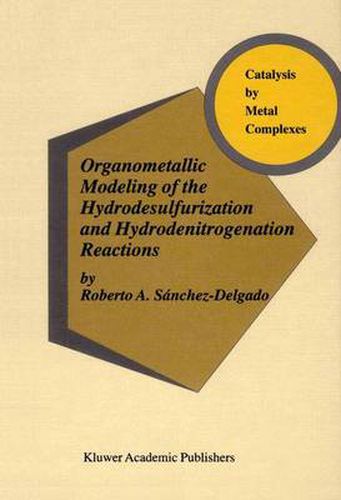Readings Newsletter
Become a Readings Member to make your shopping experience even easier.
Sign in or sign up for free!
You’re not far away from qualifying for FREE standard shipping within Australia
You’ve qualified for FREE standard shipping within Australia
The cart is loading…






This title is printed to order. This book may have been self-published. If so, we cannot guarantee the quality of the content. In the main most books will have gone through the editing process however some may not. We therefore suggest that you be aware of this before ordering this book. If in doubt check either the author or publisher’s details as we are unable to accept any returns unless they are faulty. Please contact us if you have any questions.
The fields of hydrodesulfurization (HDS) and hydrodenitrogenation (HDN) continue to attract the attention of researchers in the various disciplines connected to these fascinating problems that represent two of the key outstanding chemical challenges for the petroleum refining industry in view of their very strong environmental and commercial implications. One area that has flourished impressively over the last 15 years is the organometallic chemistry of thiophenes and other related sulfur-containing molecules. This has become a powerful method for modeling numerous surface species and reactions implicated in HDS schemes, and nowadays it represents an attractive complement to the standard procedures of surface chemistry and heterogeneous catalysis, for understanding the complex reaction mechanisms involved in this process. Similar developments have begun to appear in connection with HDN mechanisms, although in a much more modest scale and depth. Some years ago when, encouraged by Prof. B. R. James, this book was planned, several excellent reviews and monographs treating different aspects of HDS were already available including some on the subject of organometallic models. However, it seemed appropriate to try to summarize the most striking features of this chemistry in an updated and systematic way, and inasmuch as possible in connection with the common knowledge and beliefs of the mechanisms of heterogeneous HDS catalysis. Hopefully, this attempt to build some conceptual bridges between these two traditionally separated areas of chemistry has met with some success.
$9.00 standard shipping within Australia
FREE standard shipping within Australia for orders over $100.00
Express & International shipping calculated at checkout
This title is printed to order. This book may have been self-published. If so, we cannot guarantee the quality of the content. In the main most books will have gone through the editing process however some may not. We therefore suggest that you be aware of this before ordering this book. If in doubt check either the author or publisher’s details as we are unable to accept any returns unless they are faulty. Please contact us if you have any questions.
The fields of hydrodesulfurization (HDS) and hydrodenitrogenation (HDN) continue to attract the attention of researchers in the various disciplines connected to these fascinating problems that represent two of the key outstanding chemical challenges for the petroleum refining industry in view of their very strong environmental and commercial implications. One area that has flourished impressively over the last 15 years is the organometallic chemistry of thiophenes and other related sulfur-containing molecules. This has become a powerful method for modeling numerous surface species and reactions implicated in HDS schemes, and nowadays it represents an attractive complement to the standard procedures of surface chemistry and heterogeneous catalysis, for understanding the complex reaction mechanisms involved in this process. Similar developments have begun to appear in connection with HDN mechanisms, although in a much more modest scale and depth. Some years ago when, encouraged by Prof. B. R. James, this book was planned, several excellent reviews and monographs treating different aspects of HDS were already available including some on the subject of organometallic models. However, it seemed appropriate to try to summarize the most striking features of this chemistry in an updated and systematic way, and inasmuch as possible in connection with the common knowledge and beliefs of the mechanisms of heterogeneous HDS catalysis. Hopefully, this attempt to build some conceptual bridges between these two traditionally separated areas of chemistry has met with some success.